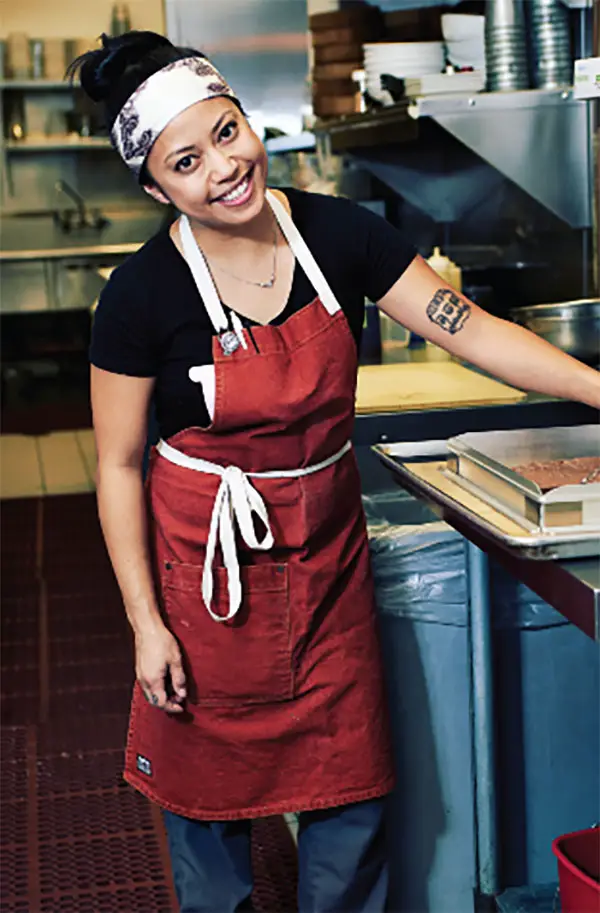Many kitchens stay true to tradition while others allow the kitchen crew to express their creativity through their apparel choices.
During the early 2000’s trends started to emerge from the local kitchens that included dress coats of luxurious fabrics and styles. We started to see more crazy
pants and more color choices in coat piping, cuff style, sleeve length and foot wear, distinctive neckties and head gear. Some Chefs began to sport custom hair styles
that set them apart and tattoos began to be exposed. It seems to be okay to be unique and stand out in the crowd of traditionally clad cooks.
Traditionalists found in competition, hotels and old school clubs can still be seen sporting tall toques, traditional coats and medals.
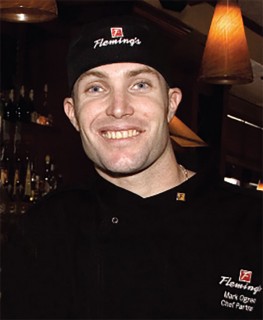 Ogren
Ogren
Fleming’s Prime Steakhouse & Wine Bar sets their exhibition style kitchen with the culinary crew in their signature double rim beanie–clean lines; polycotton blend that’s cool and comfortable. The adjustable Velcro closure allows it to fit snugly. The restaurant, first opened in 1998, with a French beret,but moved to the signature style 12 years ago.
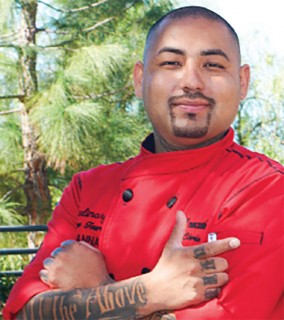 Tzorin
Tzorin
Chris Tzorin’s signature is that bright red coat.
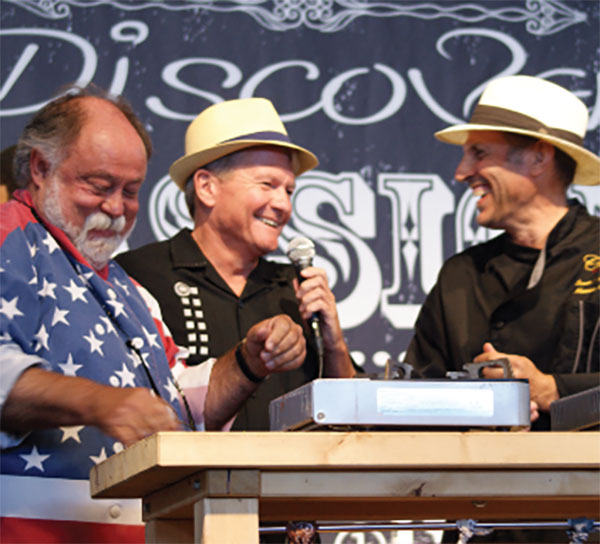 Greeley & Navarretta
Greeley & Navarretta
Always an innovator, Alan Greely had 10 coatsmade out of different fabrics and with differentdesigns in 1986. The linen ones that breath betterare still his favorites! Most have 3/4 sleeves,custom buttons and comfortable neck lines. Somedesigns and fabrics are louder than others. TheAmerican flag coat (pictured here with ChefMassimo Navarretta who sports a Panama to addstyle and sun protection) is a polyester/cotton blendwith longer sleeves than most of his jackets.
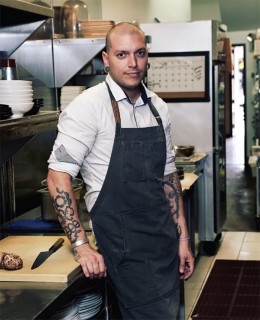 Habiger
Habiger
Chef Aron Habiger of The North Left has his ownpersonal chef style. Instead of the traditional chef’scoat, he prefers a button down shirt. His head gearis a Japanese terrycloth towel. And lastly, he’s bigon running shoes as opposed to the traditional clog.
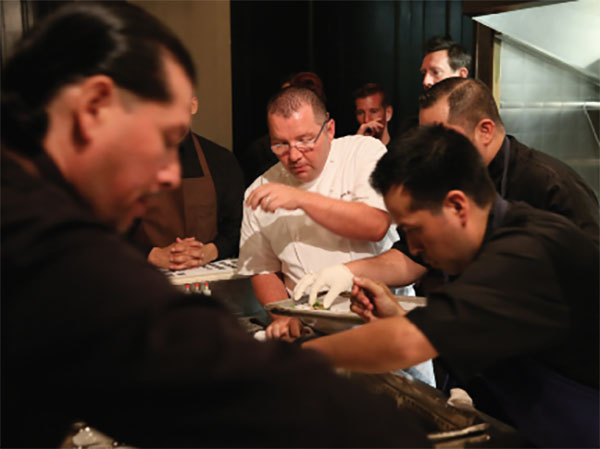 Marneau
Marneau
Marche Moderne sets the stage of his wide openexhibition kitchen with a subtle theater touch.Chef-owner Florent Marneau alone is in whites; allthe culinary team is in black.
 Weyler
Weyler
Chef Niki Starr Weyler’s approachable flair canbe described as “girly mixed with old schoolpunk rock”, as demonstrated by her colorfulEllen Tracy silk scarves—usually in bright green,blue and pink hues—an eye-catching comboagainst her lavender colored hair. Chef Niki isalso known for wearing her custom embroideredLost Car Chef chef’s coat, the women’s Starr coatjacket—which was actually styled for and namedafter her. Niki was an early fan of the now widelysuccessful line, wearing men’s coats in size extrasmall, before the designer Carlos Garcia decidedto make a more figure flattering women’s version.In the kitchen, Niki pairs her self-titled denimchef’s coat with converse kicks and is also knownto wear colorful aprons—a favorite being the redrover apron that she fittingly received as aValentine’s Day gift.
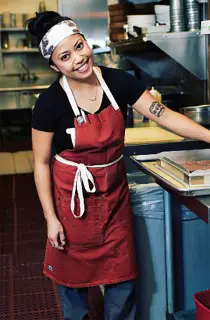 Guzman
Guzman
When it comes to chef uniforms, Pastry ChefAshley Guzman of The North Left in Santa Anatruly appreciates the evolution over the years. Inher experience it has allowed chefs to be morecomfortable and also to have a more personalsense of style, hers being considered a blend oftraditional and modern. For safety precautions shewears the more traditional chef pants and kitchenclogs, and pairs it with modern touches such as avintage head scarf, a colorful apron, and acomfortable t-shirt from one of the localbusinesses in Santa Ana. Being a petite woman,she finds it difficult to find a coat that actually fitsher and isn’t long sleeved.
History of Chef Attire
The Classic Double-Breasted White Jacket Is Vestigial — it originated when chefs were servants of the king and presumably might be called upon to serve in battle as well as in noble households.By the 1820s, chefs were wearing uniforms purportedly based on those worn by soldiers in the Turkish army. White eventually became the standard to emphasize cleanliness and good sanitation.There are numerous unsubstantiated legends about the origins of the chef’s tall white toque; one version attributes it to the tubular black hats worn by Greek Orthodox priests. Antonin Carême, the 18th-century chef to Tally rand and various Rothschilds, is also credited with bringing the toque into the kitchen. Supposedly inspired by a woman’s hat, he inserted a snappy cardboard tube into his cap, and the style caught on. Traditional stiff,pleated toques are about 8 inches tall, but executive chefs wear them up to 12 inches. One story told in culinary school is that the extra-tall headgear enables subordinates in need of guidance to quickly spot the chef in a crowded kitchen.







